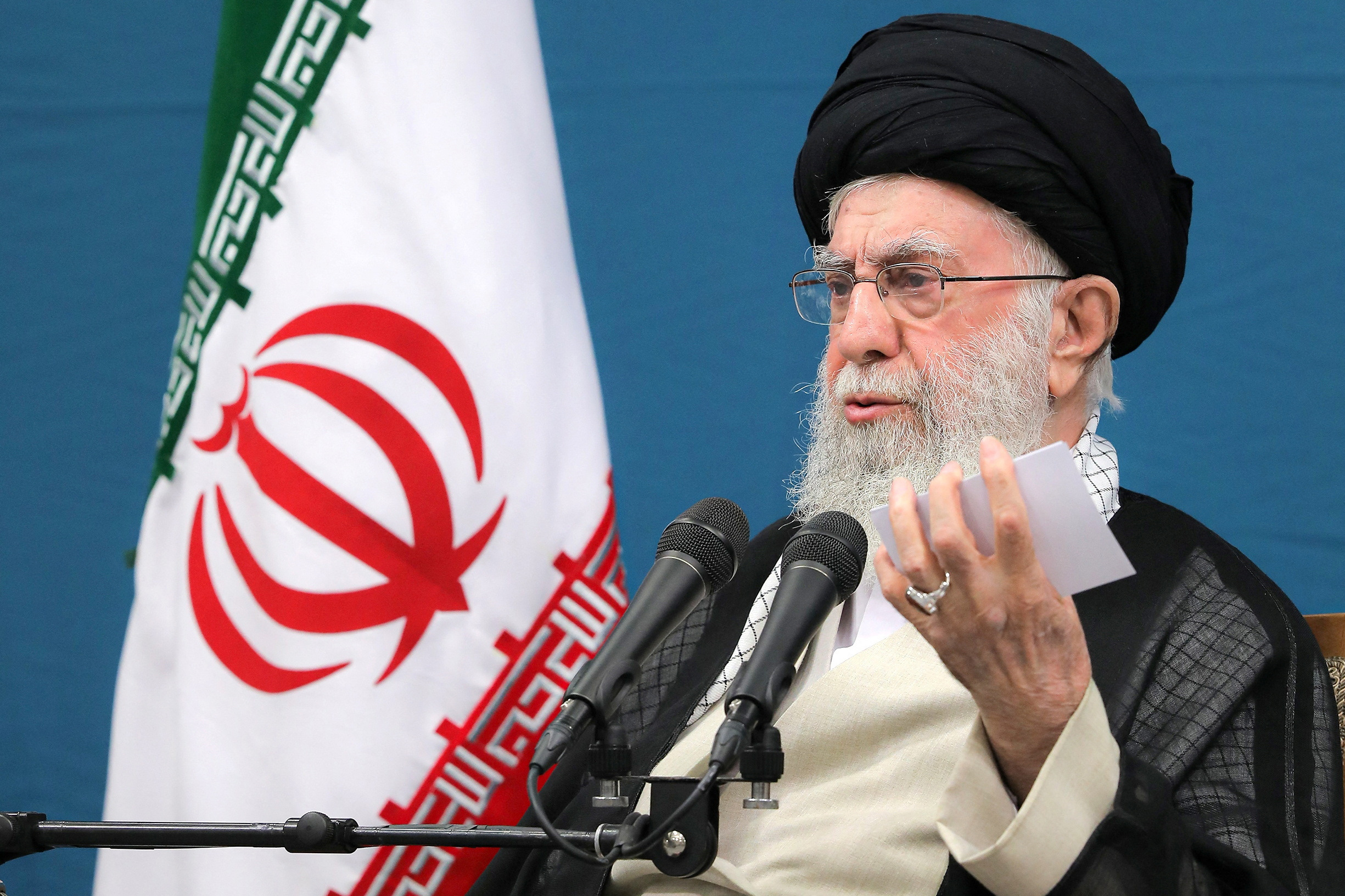Unveiling Iran's Supreme Leader: Power, History, And Influence
The office of the Supreme Leader of Iran stands as the bedrock of the Islamic Republic, embodying both the spiritual and political authority that guides the nation. More than just a head of state, this figure holds the ultimate say in all major decisions, shaping Iran's destiny on both domestic and international fronts. Understanding the role and the individual who occupies it is crucial for anyone seeking to comprehend the complexities of modern Iran.
Officially known as the "Supreme Leadership Authority," and often referred to as the "Supreme Leader of the Islamic Revolution," this position transcends that of the president, representing the highest political and religious authority in the country. Since the passing of its revolutionary founder, Ayatollah Ruhollah Khomeini, in 1989, Ayatollah Ali Khamenei has held this powerful mantle, steering Iran through decades of significant geopolitical shifts, internal challenges, and continuous engagement with the global community. His tenure has been marked by a steadfast commitment to the principles of the Islamic Revolution, even as Iran navigates an increasingly complex world.
Table of Contents
- The Pillar of the Islamic Republic: Understanding the Supreme Leader
- Ayatollah Ali Khamenei: A Biographical Sketch
- From Revolutionary Aide to Supreme Leader: Khamenei's Ascension
- The Supreme Leader's Sweeping Authority in Iran
- Navigating Geopolitical Currents: Iran Supreme Leader and Foreign Policy
- Domestic Challenges and the Supreme Leader's Vision
- Public Image and Cultural Representation of the Supreme Leader
- The Future of the Supreme Leadership in Iran
- Conclusion: The Enduring Legacy of the Iran Supreme Leader
The Pillar of the Islamic Republic: Understanding the Supreme Leader
The concept of the Supreme Leader, or "Rahbar" as it's known in Persian, was formally instituted in 1979 with the establishment of Iran's Islamic Republic. This unique political system, born out of the Iranian Revolution, ingeniously blends elements of democratic governance with a foundational layer of theocratic oversight. At its core, the system vests ultimate authority in a leading Islamic cleric of the Twelver Shi'i sect, ensuring that all state affairs align with Islamic principles. This structure places the Supreme Leader not just at the apex of the religious hierarchy, but also as the undisputed head of state, positioned strategically above even the elected president. The Supreme Leader's role is multifaceted and comprehensive. They are the ultimate arbiter of state policy, the commander-in-chief of the armed forces, and the final decision-maker on matters of national security, foreign policy, and the judiciary. This expansive mandate means that virtually all functions of government, whether directly or indirectly, fall under the purview and ultimate approval of the Supreme Leader. This singular position ensures ideological consistency and continuity in governance, reflecting the revolutionary ideals upon which the Islamic Republic was founded. The authority is not merely symbolic; it is deeply entrenched in the legal and constitutional framework of Iran, making the Supreme Leader the single most powerful figure in the country.Ayatollah Ali Khamenei: A Biographical Sketch
Ayatollah Ali Khamenei, the current Iran Supreme Leader, was born in 1939 in Mashhad, Iran's second-largest city and a revered pilgrimage site in eastern Iran. He emerged from a religious family of modest means, a background that grounded him in the spiritual traditions of Shi'ism while exposing him to the everyday realities of Iranian society. His formative years coincided with a period of intense political and social ferment in Iran, as the country grappled with the influence of Western powers and the growing calls for national sovereignty and Islamic revival. Khamenei came of age in the years leading up to the 1979 Islamic Revolution, a period that profoundly shaped his intellectual and political trajectory. His early years reveal a man of eclectic tastes and intellectual curiosity. He engaged deeply with Iranian intellectuals of his time, absorbing a wide array of ideas, encompassing both secular and Islamist thought. This intellectual breadth allowed him to critically assess the prevailing political landscape and develop a nuanced understanding of the challenges facing Iran. Crucially, he became a close ally of Ayatollah Ruhollah Khomeini, the charismatic figure who would go on to lead the 1979 revolution that overthrew the last Shah, Mohammad Reza Pahlavi, and established the Islamic Republic. This close association with Khomeini proved instrumental in Khamenei's rise through the ranks of the revolutionary movement and, eventually, to the highest office in the land.Personal Data and Biodata: Ayatollah Ali Khamenei
| Attribute | DetailThe office of the Supreme Leader of Iran stands as the bedrock of the Islamic Republic, embodying both the spiritual and political authority that guides the nation. More than just a head of state, this figure holds the ultimate say in all major decisions, shaping Iran's destiny on both domestic and international fronts. Understanding the role and the individual who occupies it is crucial for anyone seeking to comprehend the complexities of modern Iran.
Officially known as the "Supreme Leadership Authority," and often referred to as the "Supreme Leader of the Islamic Revolution," this position transcends that of the president, representing the highest political and religious authority in the country. Since the passing of its revolutionary founder, Ayatollah Ruhollah Khomeini, in 1989, Ayatollah Ali Khamenei has held this powerful mantle, steering Iran through decades of significant geopolitical shifts, internal challenges, and continuous engagement with the global community. His tenure has been marked by a steadfast commitment to the principles of the Islamic Revolution, even as Iran navigates an increasingly complex world.
Table of Contents
- The Pillar of the Islamic Republic: Understanding the Supreme Leader
- Ayatollah Ali Khamenei: A Biographical Sketch
- From Revolutionary Aide to Supreme Leader: Khamenei's Ascension
- The Supreme Leader's Sweeping Authority in Iran
- Navigating Geopolitical Currents: Iran Supreme Leader and Foreign Policy
- Domestic Challenges and the Supreme Leader's Vision
- <

Iran's Supreme Leader calls for regulation of cyberspace | Reuters

News: Iran's supreme leader taken to secure location, sources say

Iran's Supreme Leader approves Mokhber as interim president, declares 5